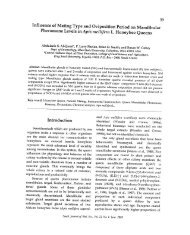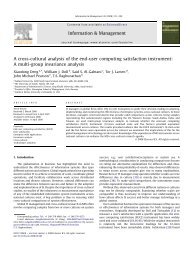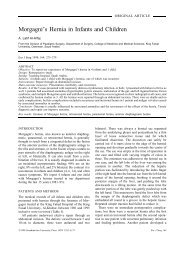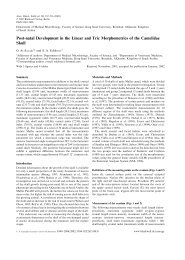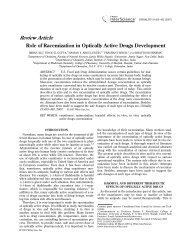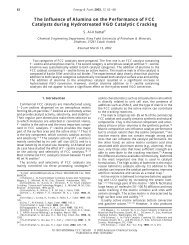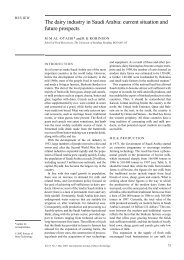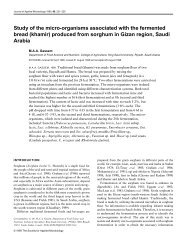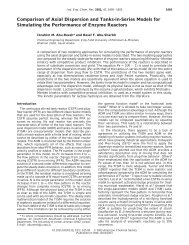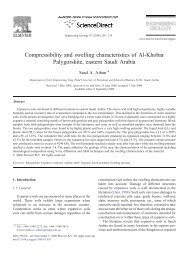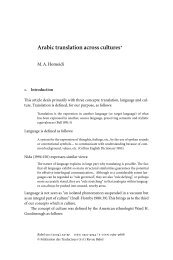Enslavement and Manumission in Saudi Arabia, 1926-38
Enslavement and Manumission in Saudi Arabia, 1926-38
Enslavement and Manumission in Saudi Arabia, 1926-38
Create successful ePaper yourself
Turn your PDF publications into a flip-book with our unique Google optimized e-Paper software.
ALAINE S. HUTSON<br />
Table 4. <strong>Saudi</strong> <strong>Arabia</strong>: number of years enslaved<br />
Number of Women Men Born a slave Captured Total<br />
years enslaved (n 5 37) (n 5 105) (n 5 20) (n 5 113) (n 5 142)<br />
Mean 22.9 22.9 28.3 21.5 22.9<br />
Median 20 21 30 20 20<br />
Maximum 60 60 60 59 60<br />
M<strong>in</strong>imum 5 Less than 1 Less than 1 Less than 1 Less than 1<br />
was recorded, the overwhelm<strong>in</strong>g majority—89.5 percent (n 5 127)—spent more<br />
than seven years <strong>in</strong> slavery.<br />
Table 4 shows that, on average, slaves served 22.9 years <strong>in</strong> slavery. Slaves<br />
were used as durable, portable commodities regardless of gender or familiarity. <strong>38</strong><br />
The mean for women <strong>and</strong> men was the same <strong>and</strong> the median varied by only one<br />
year. N<strong>in</strong>eteenth- <strong>and</strong> twentieth-century orientalists’ writ<strong>in</strong>gs on slavery attest to<br />
great familiarity <strong>and</strong> therefore goodwill between slaves <strong>and</strong> their masters. 39<br />
Through these writ<strong>in</strong>gs one might expect that those born as slaves <strong>in</strong> <strong>Saudi</strong><br />
<strong>Arabia</strong> would have closer ties to their masters <strong>and</strong> therefore would have been<br />
manumitted sooner; they might have narrated stories of their parents’ manumission<br />
<strong>and</strong> might have been more likely to have only one master. That is not the<br />
case <strong>in</strong> this study. Table 4 shows that the mean number of years enslaved for<br />
those born <strong>in</strong> slavery (n 5 20) is nearly 10 years longer than for those people<br />
who were captured <strong>and</strong> sold <strong>in</strong>to slavery. The median was exactly a decade<br />
more. Few of the narratives record that parents were freed. Most are like Halima<br />
b<strong>in</strong>t Okkash: their parents died as slaves. 40<br />
Sixteen of the twenty people who said they had been born <strong>in</strong>to slavery also<br />
reported the number of masters who had owned them dur<strong>in</strong>g their enslavement.<br />
While those with one master were enslaved for an equal (median) or shorter<br />
period of time (mean) than those with more than one master; those who were<br />
born as slaves were equally as likely to have more than one master (see Table<br />
5). Freed women <strong>and</strong> men seldom noted the reasons for their sale dur<strong>in</strong>g slavery,<br />
<strong>38</strong><br />
Marmon, ed., Slavery <strong>in</strong> the Islamic Middle East, p. 5, argues that slaves were considered commodities <strong>in</strong> Islamic<br />
law as well as <strong>Saudi</strong> <strong>Arabia</strong>n practice.<br />
39<br />
See Michel Le Gall, Translation of Louis Frank, ‘Memoire sur le commerce des negres au Kaire, et sur les<br />
maladies auxquelles ils sont sujets en y arrivant’ (1802) [Memoir on the traf c <strong>in</strong> Negroes <strong>in</strong> Cairo <strong>and</strong> on the<br />
illnesses to which they are subject upon arrival there],’ <strong>in</strong> ibid., p. 81; Eldon Rutter, The Holy Cities of <strong>Arabia</strong><br />
(London: G.P. Putnam’s Sons, 1930), p. 397; <strong>and</strong> Garrett DeJong, ‘Slavery <strong>in</strong> <strong>Arabia</strong>,’ The Moslem World, 24<br />
(1934): 139.<br />
40<br />
F.O. 905/11 1934. Of course, the 10-year difference re ects the fact that those born slaves were with masters<br />
as <strong>in</strong>fants <strong>and</strong> young children unable to do much work, <strong>and</strong> those captured were children or adults able to work.<br />
Nevertheless, the test still illustrates the po<strong>in</strong>t that familiarity between slaves <strong>and</strong> masters did not make for a climate<br />
conducive to early manumission.<br />
60



